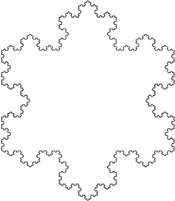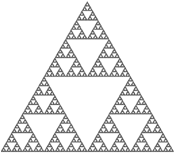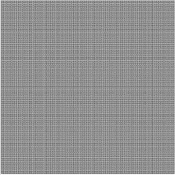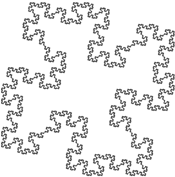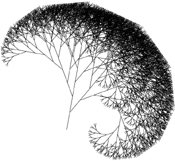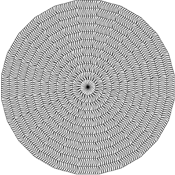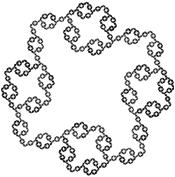| Initial Axiom |
F |
| Transformation Rules |
F > FfF
f > fff
|
| Initial Heading (degrees) |
0 |
| Rotation Unit (degrees) |
N/A |
The Cantor's dust is certainly not as visually attractive
as other fractals, but it possesses some interesting mathematical properties,
some of which are explored in the next section. This fractal was invented
in the late 19th century by the German mathematician Georg Cantor.
The first iteration
is simply a line. At each iteration, the middle third of every line
is removed. As the iterations continue and the fractal becomes more
"full of holes", the total length of the lines approaches zero, but
the number of lines approaches infinity, conserving the complexity
of the fractal.
Note that specification of the rotation unit is unnecessary,
as the turtle will never be told to rotate (neither the initial axiom
nor either of the transformation rules includes a + or - character). |
